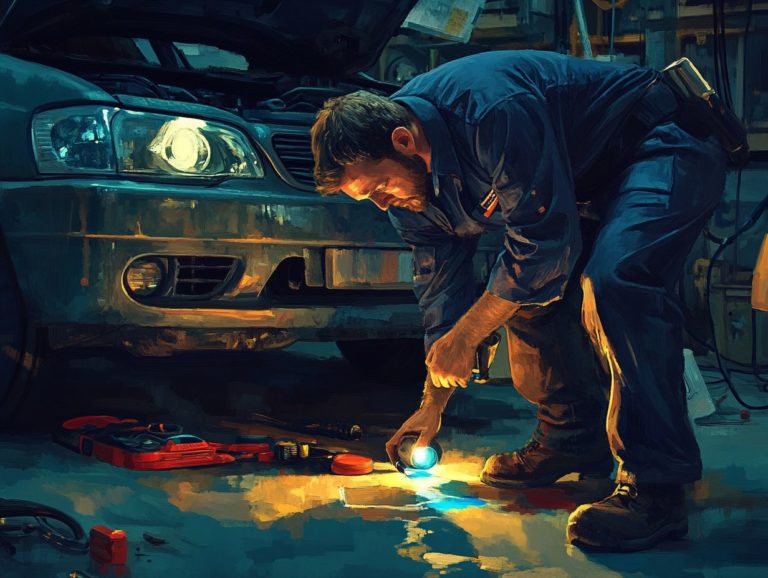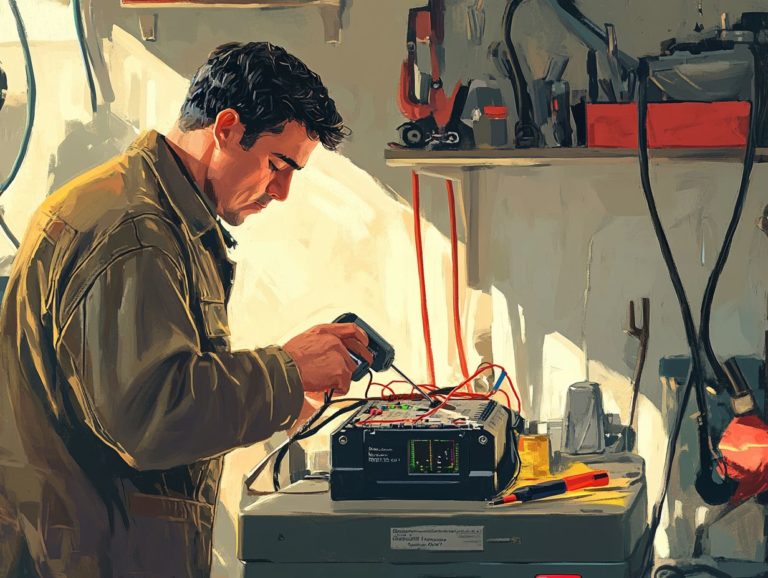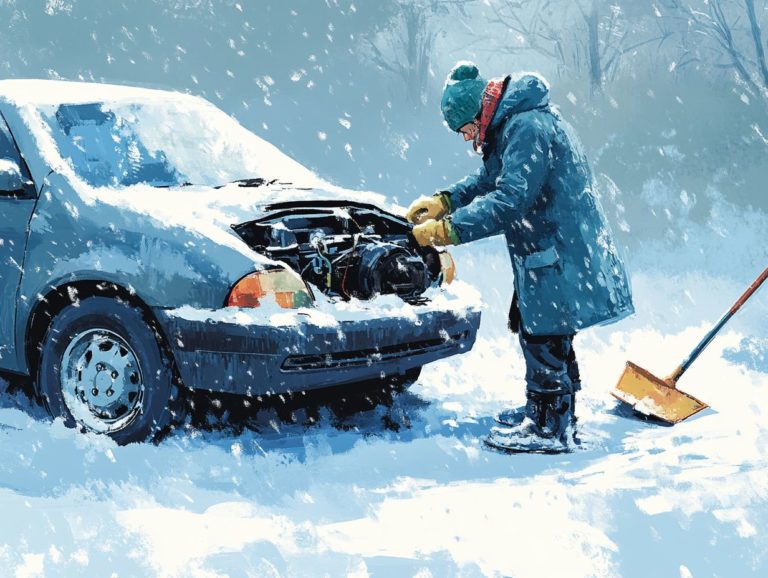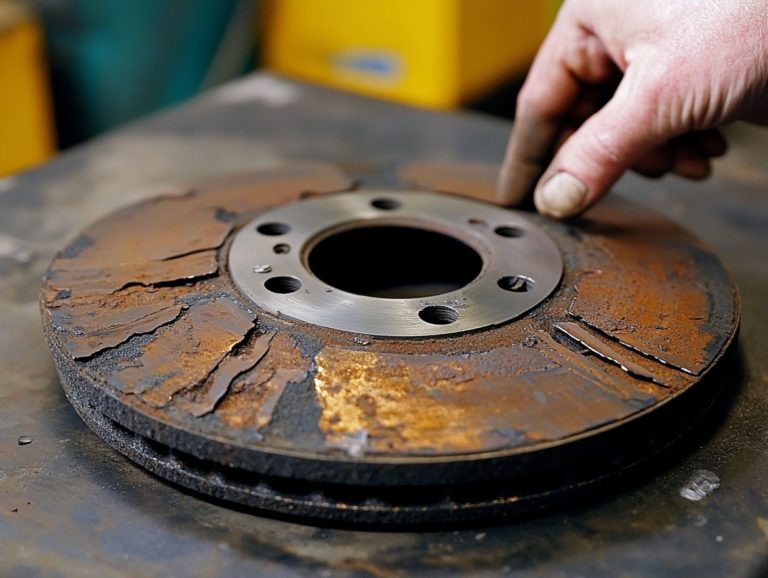Signs Your Tires Need Immediate Attention
Maintaining your tires is essential for safeguarding your vehicle’s safety and optimizing its performance. Regular tire maintenance keeps you safe and your vehicle running smoothly!
Not only does it enhance your driving comfort, but it also significantly extends the lifespan of your tires. Stay vigilant about your tires by recognizing the signs of wear and understanding the common causes of tire problems.
You’ll find practical tips for DIY fixes and insights on when to call a professional, ensuring you re fully equipped to keep your tires in impeccable condition.
Contents
- Key Takeaways:
- Understanding Tire Maintenance
- Signs Your Tires Need Attention
- Changes in Vehicle Performance
- Common Causes of Tire Issues
- Addressing Tire Problems
- Tire Replacement and Maintenance Tips
- Frequently Asked Questions
- What are some signs that my tires need immediate attention?
- Why is it important to address tire issues immediately?
- What should I do if I notice signs that my tires need immediate attention?
- Can tire issues be prevented?
- How often should I check my tires for signs of wear?
- What should I do if I experience a blowout while driving?
Key Takeaways:
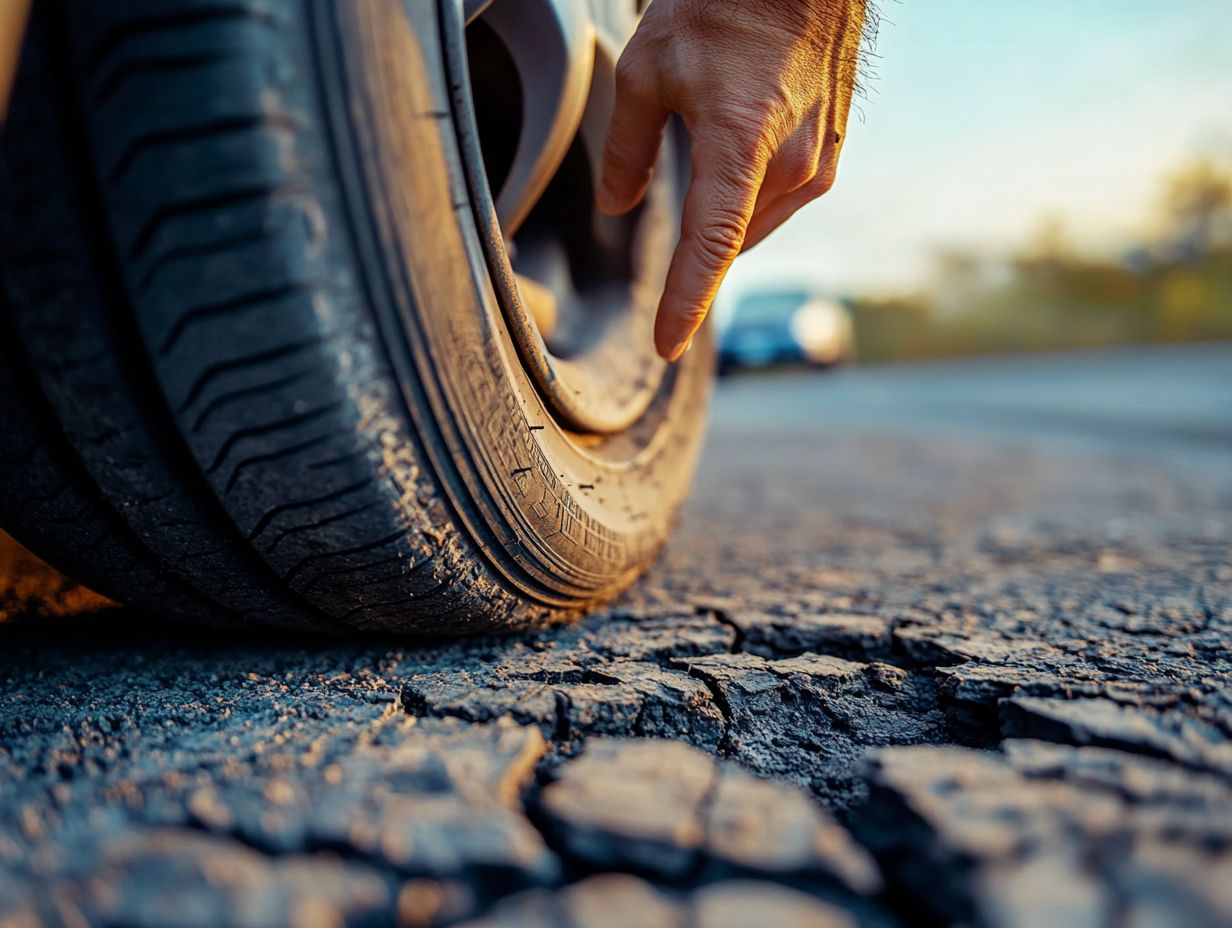
- Regular maintenance is crucial for tire longevity and safe driving.
- Keep an eye out for visual signs of wear, such as uneven wear and cracks in the sidewall.
- Changes in how your vehicle performs, like decreased fuel efficiency and handling issues, may indicate tire problems.
Understanding Tire Maintenance
Understanding tire maintenance is essential for every vehicle owner, as it profoundly influences safety, performance, and the lifespan of your tires. Regular checks ensure that your tires remain in peak condition, helping to prevent issues like air loss or tread wear that could pose serious safety risks.
Effective tire maintenance involves checking how much air is in your tires, checking how much grip your tires have left, and following scheduled inspections. Staying informed about the age of your tires and the recommended service intervals can protect you from unexpected tire failures, ultimately elevating your entire driving experience.
Why Regular Maintenance is Important
Regular tire maintenance is crucial for your safety and your vehicle’s performance. Neglecting this vital aspect can lead to serious consequences, as improper tire conditions heighten the risk of accidents.
The National Highway Traffic Safety Administration reports that poor tire maintenance contributes to approximately 30% of all vehicular crashes, underscoring the importance of keeping your tires in excellent condition.
Overlooking issues like low air pressure or uneven wear jeopardizes your vehicle’s control and your overall safety on the road. Reduced traction can extend stopping distances, particularly in bad weather, putting everyone at risk.
Signs Your Tires Need Attention
Pay attention! Your tires may need immediate care to ensure your safety! Early detection can help avert serious problems, like tire failure, ensuring a smoother and safer driving experience.
Look for Signs of Wear

Look for signs like uneven wear, bulges, or blisters. These can hint at problems that need quick attention! By closely examining features like tread wear patterns, you can get a good idea of your tires’ health.
If you notice uneven wear, it might point to alignment or inflation problems. Bulges can signal internal damage that might lead to a blowout. Blisters often arise from overheating or impact damage and can compromise the tire s integrity.
Using tread indicators is crucial, as they reveal tread depth and help you determine if your tires are nearing the end of their usable life. By paying close attention to these visual signs, you ensure both safety and optimal performance on the road.
Changes in Vehicle Performance
If you notice changes in your vehicle’s performance, your tires may need some care. Unusual vibrations or strange noises can indicate underlying issues.
These may stem from uneven tire wear or low air pressure. Both significantly affect your vehicle’s handling and fuel efficiency.
You might feel less responsiveness while driving, making control more challenging, especially during sharp turns or sudden stops.
If your tires aren t at their best, expect higher fuel consumption and more noise while driving. Ignoring these changes can lead to serious issues, like a sudden tire failure, which compromises safety and may result in costly repairs.
Common Causes of Tire Issues
Common tire issues often arise from external factors and your driving habits. These can lead to air loss, uneven tread wear, and compromised safety.
By being mindful of these influences, you can help prevent potential tire complications and enjoy a smoother, safer ride.
External Factors and Driving Habits
External factors and your driving habits greatly influence the health of your tires. For example, extreme temperatures whether scorching hot or bitterly cold can cause tire pressure fluctuations, leading to blowouts or reduced traction.
Navigating poorly maintained roads filled with potholes or debris can worsen wear and tear, impacting the alignment and balance of your tires.
Adopting mindful driving habits, such as avoiding sudden stops and starts and regularly checking your tire pressure, can enhance both tire longevity and performance.
This approach ensures a smoother ride and promotes better fuel efficiency, creating a win-win situation for you and your vehicle.
Addressing Tire Problems
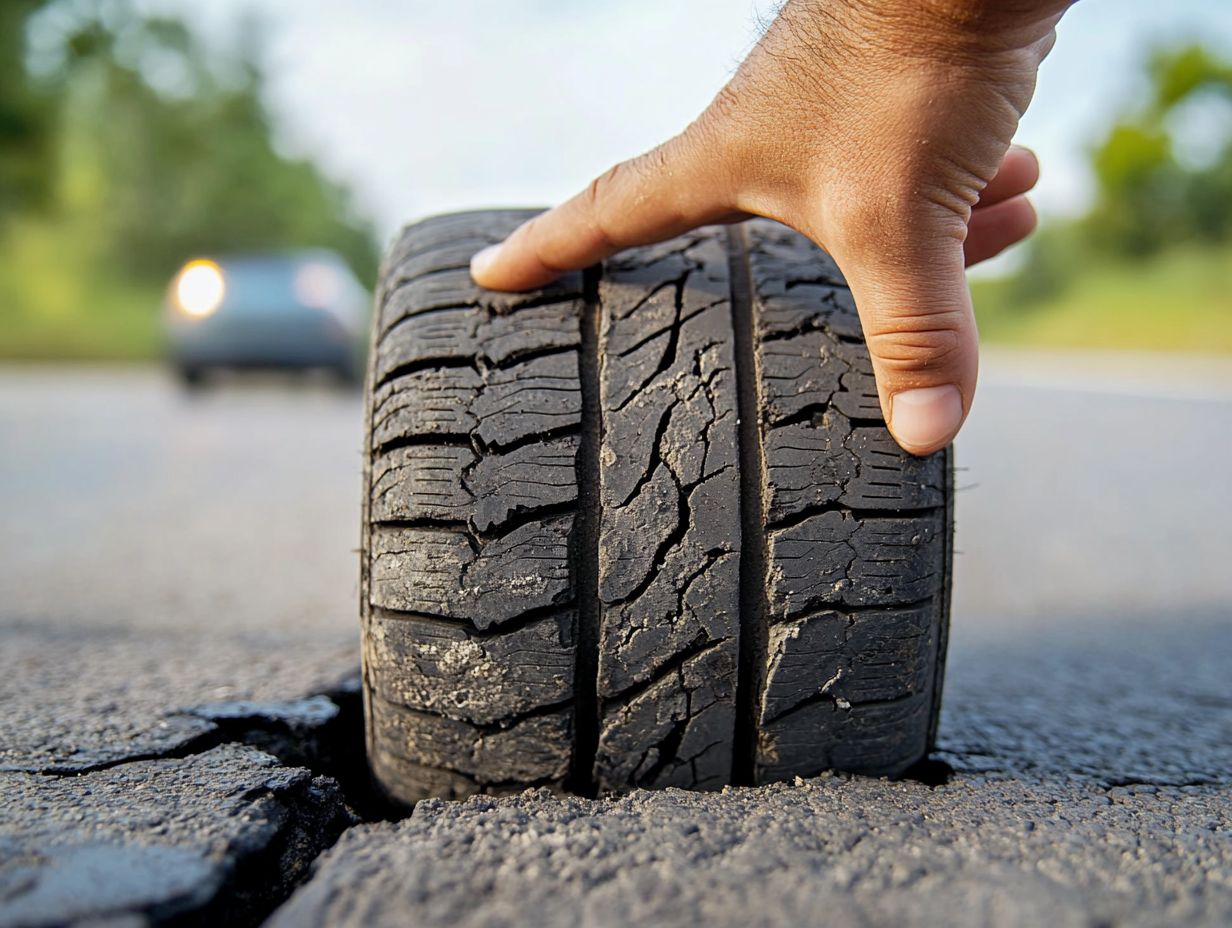
Don t wait! Fixing tire issues quickly keeps you safe and your vehicle running smoothly.
Knowing when to tackle repairs yourself or when to seek professional assistance can save you both time and money.
DIY Fixes and When to Seek Professional Help
When you encounter tire problems, it s crucial to identify which issues you can fix and which require professional help for your safety on the road.
You may deal with minor punctures, which are often easily fixed with a tire repair kit. With just a few simple tools, you can patch up that tire and be back on your way.
However, not all repairs are straightforward. While small holes in the tread can sometimes be sealed, issues like deep cuts, severe tread wear, or damage to the sidewall pose serious safety risks and require a professional’s expertise.
Relying solely on DIY techniques can create a false sense of security, potentially endangering you and others on the road. Recognizing your limitations allows you to make informed decisions about when to attempt a home fix and when to call in the experts.
Tire Replacement and Maintenance Tips
Understanding when to replace your tires and how to prolong their lifespan is essential for optimal vehicle performance and your safety.
Timely tire replacement can significantly reduce the risk of accidents, ensuring you navigate the roads with confidence and peace of mind.
When to Replace Tires and How to Extend Lifespan
Knowing when to replace your tires is essential for safety and performance. Key factors include how deep the tire grooves are and age.
Tread wear indicators, found in the grooves of the tire, signal when the tread is unsafe. Tire age matters too; most manufacturers suggest replacing them every six to ten years, regardless of tread wear.
Regular maintenance can extend the life of your tires. Ensure proper inflation, perform regular swaps, and check alignment.
By keeping an eye on these factors, you can enjoy better safety and longevity from your tires!
Frequently Asked Questions
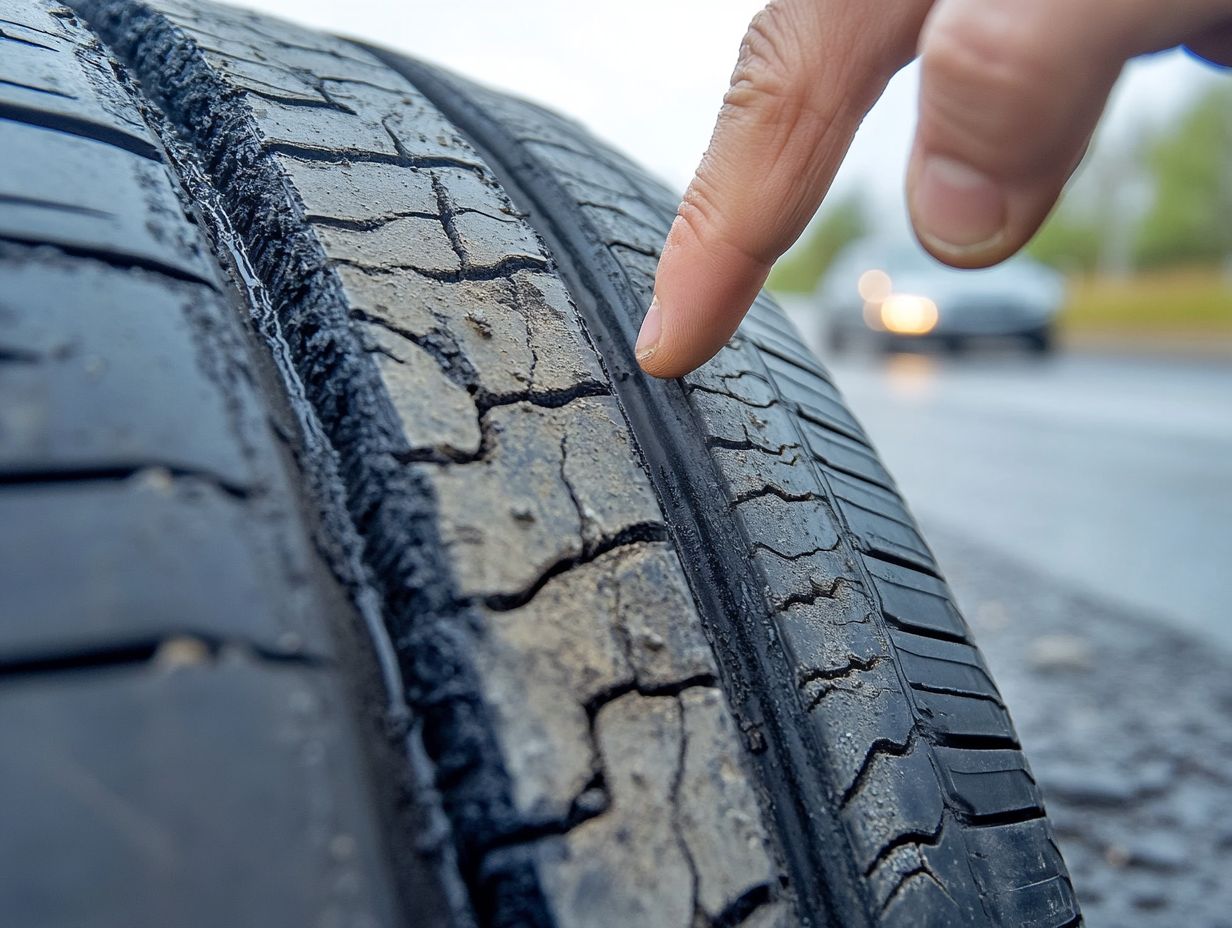
What are some signs that my tires need immediate attention?
Look out for uneven tread wear, cracks or bulges in the sidewall, low tire pressure, and excessive vibration while driving.
Why is it important to address tire issues immediately?
Poor condition tires can decrease fuel efficiency and handling. They may even blow out while driving, putting you at risk!
What should I do if I notice signs that my tires need immediate attention?
If you notice any tire issues, have them inspected by a professional right away. They can identify the problem and suggest what to do next.
Can tire issues be prevented?
Some problems are unavoidable, but regular maintenance can help! Check tire pressure, swap tires regularly, and avoid overloading your vehicle.
How often should I check my tires for signs of wear?
Check your tires at least once a month. You should also have a professional inspect them at least once a year or every 10,000 miles!
What should I do if I experience a blowout while driving?
Stay calm and steer your vehicle to a safe spot away from traffic. Don t slam the brakes! Once stopped, assess the damage and call for help.
Keep your ride safe! Check your tires today!

